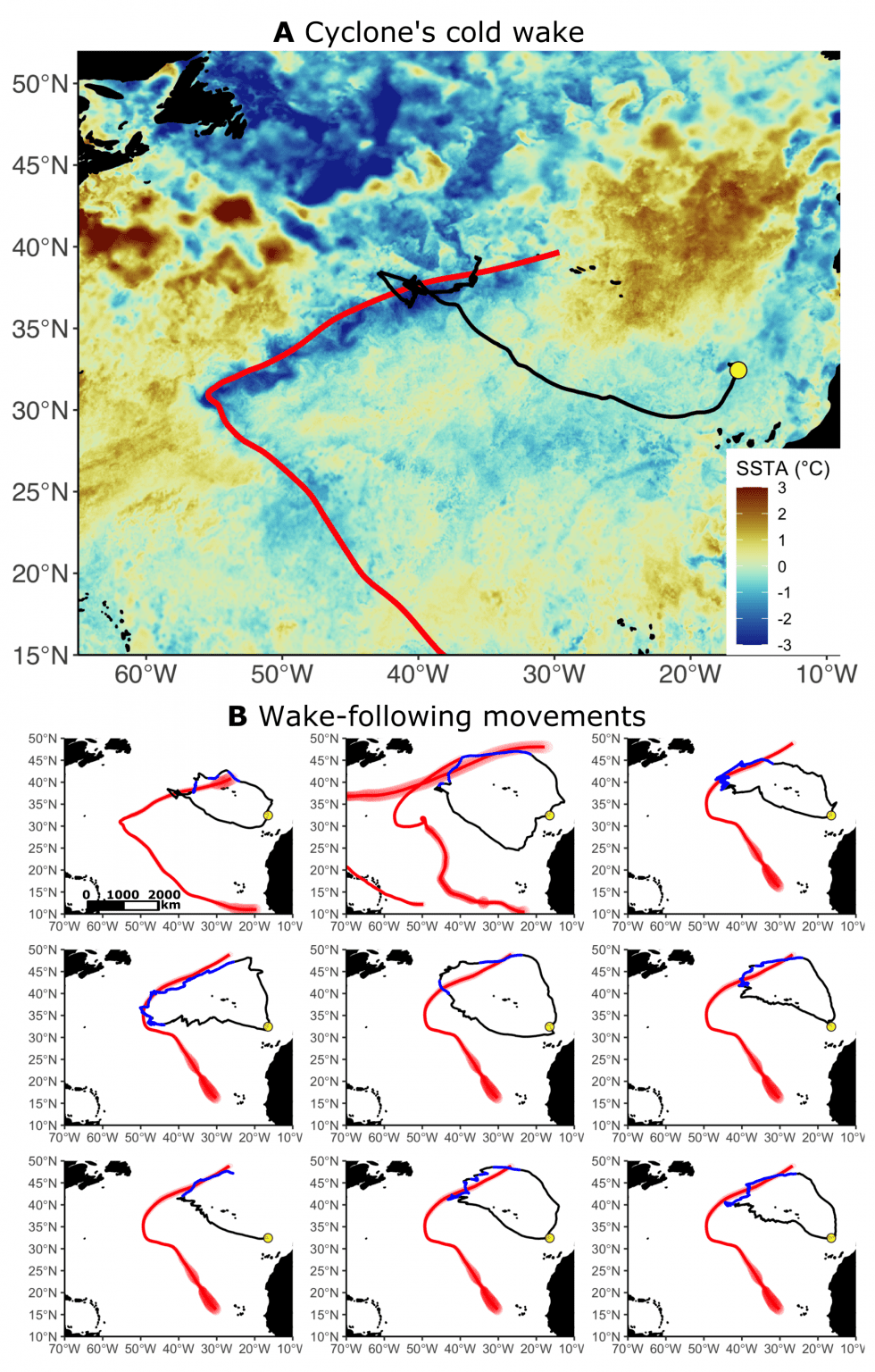Oceanic seabirds chase tropical cyclones
Ventura, F., Sander, N., Catry, P., Wakefield, E., De Pascalis, F., Richardson, P. L., Granadeiro, J. P., Silva, M. C., & Ummenhofer, C. C. (2024). Oceanic seabirds chase tropical cyclones. Current Biology, 34. https://doi.org/10.1016/j.cub.2024.06.022

Panel A: Map showing the path of hurricane Gaston (in red) and the concurrent foraging movements (in black) of a petrel from the breeding colony of Bugio (yellow dot). The underlying colors depict the sea surface temperature anomaly (blue = cold anomalies). The sea surface temperatures are anomalously low in the cyclone’s wake. Panel B: Tracks of 9 petrels that followed cyclone wakes over the greatest distance. The yellow dot is the breeding colony of Bugio; the cyclones are shown as a solid red line, with the shaded red area depicting the associated area of maximum wind speeds. The black tracks depict the petrel movements, and the blue segments are those within a maximum of 200 km from the storm’s wake. Image provided by Francesco Ventura.
In late summer and autumn, the passage of intense tropical cyclones can profoundly perturb oceanic and coastal ecosystems. Direct negative effects on individuals and marine communities can be dramatic, but cyclones can also enhance pelagic primary and secondary production. However, cyclone impacts on open ocean marine life remain poorly understood. In our latest article, we investigate their effects on the foraging movements of a wide-ranging higher predator, the Desertas petrel (Pterodroma deserta), in the mid-latitude North Atlantic during hurricane season. Contrary to previously studied pelagic seabirds in tropical and mid-latitude regions, Desertas petrels did not avoid cyclones by altering course, nor did they seek calmer conditions within the cyclone eye. Approximately one-third of petrels tracked from their breeding colony interacted with approaching cyclones. Upon encountering strong winds, the birds reduced ground speed, likely by spending less time in flight. A quarter of birds followed cyclone wakes for days and over thousands of kilometers, a behavior documented here for the first time. Within these wakes, tailwind support was higher than along alternative routes. Furthermore, at the mesoscale (hours–weeks and hundreds of kilometers), sea surface temperature dropped and surface chlorophyll sharply increased, suggesting direct effects on ocean stratification, primary production, and therefore presumably prey abundance and accessibility for surface-feeding petrels. We therefore hypothesize that cyclone wakes provide both predictably favorable wind conditions and foraging opportunities. As such, cyclones may have positive net effects on the demography of many mid-latitude pelagic seabirds and, likely, other marine top-predators. In the figure below, we show the petrels’ movements along the wake of cyclones:
